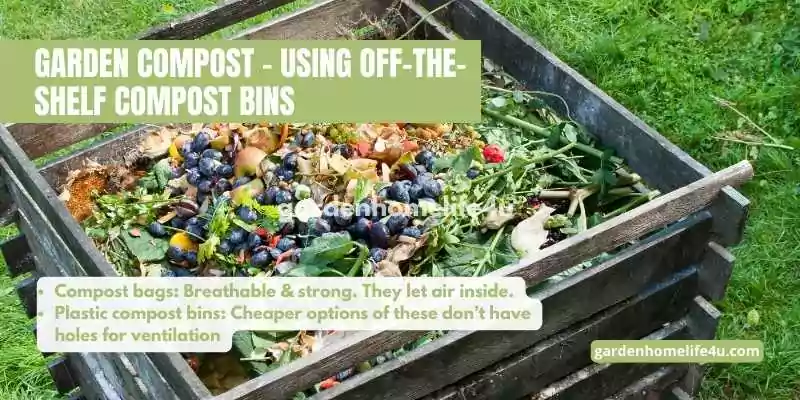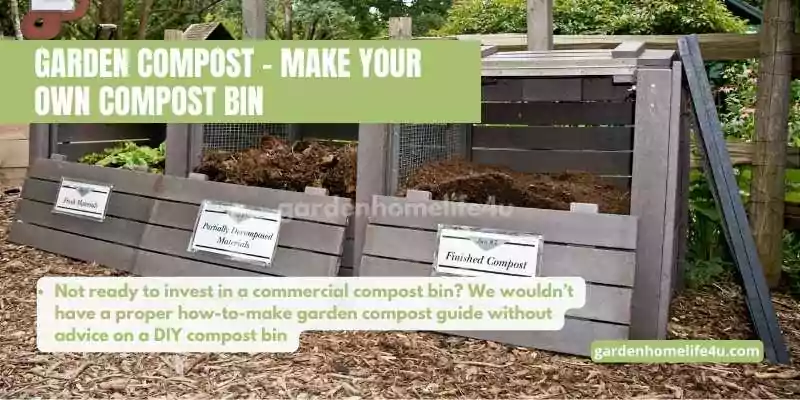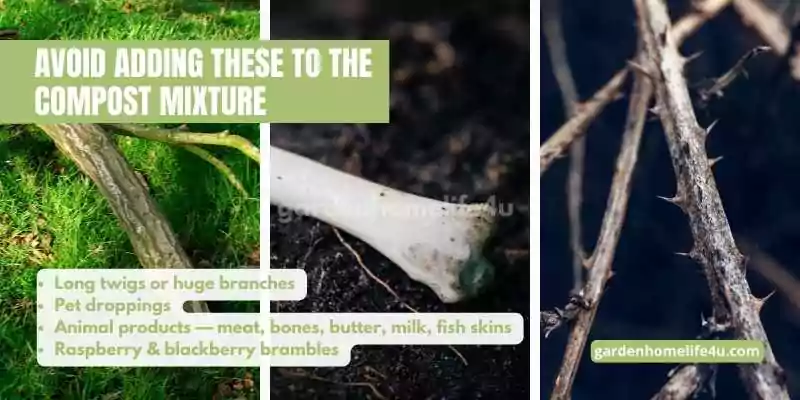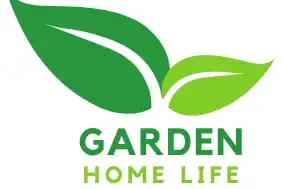We explore the art and science of composting, where seemingly ordinary materials are harmonized through a natural process to create a powerful elixir that fuels the growth of your plants. Embrace the role of a compost magician as you turn kitchen scraps, yard trimmings, and fallen leaves into black gold – a rich, earthy compost that breathes life into your garden.
From the very basics of composting to advanced techniques, our guide empowers you to close the loop on waste, reducing your ecological footprint while nurturing the health of your plants. Discover the essential components of a successful compost pile, learn the secrets of balancing green and brown materials, and understand the vital role of aeration and moisture in the decomposition process.
Join us as we unveil the magic of composting microorganisms, turning organic matter into a nutrient-packed feast for your garden’s soil. Through this process, you’ll not only enrich your plants with essential nutrients but also improve soil structure and water retention, fostering an environment where roots can thrive and flourish.
So, gather your kitchen scraps, embrace the wonder of decomposition, and let’s embark on this enriching journey together. From Scraps to Soil, we’ll guide you through the transformative process of composting, ensuring that your garden flourishes with the magic of organic nourishment, grown from the earth and returned to the earth with every season. Let’s unlock the true potential of your garden, as we cultivate a sustainable haven, fueled by the power of homemade garden compost.
Smart people think about gold; Smarter people think about Black Gold- The Compost. This nice mixture of leaves, grass, food scraps, papers, stalks, and woodchips is your soil’s best friend. Who wouldn’t want to improve their garden soil? We sure do, and that’s why bring to you this guide on how to make garden compost so you may become a pro in your field, literally.
So, why bother adding compost in the first place? Adding compost not only improves soil health and fertility but also provides a variety of other environmental benefits:
-
Reduces greenhouse gas emissions.
-
Diminishes the impact of drought.
-
Recycles organic waste we produce at home & reduces the burden of food waste on the environment.
-
Recycles nutrients.
-
Increases the humous content of the soil.
-
Minimizes soil erosion.
-
Increases water retention in soil & helps in the overall conservation of water.
-
Introduces good microbes in the soil which in turn fight the bad pathogens of the soil.
Here are our top 6 ways of making garden compost:
Garden Compost – USING OFF-THE-SHELF COMPOST BINS:

Off-the-shelf compost bins come in a variety of sizes and types. Investing in one of these would be wise of you:
- Compost bags: Breathable & strong. They let air inside.
- Plastic compost bins: Cheaper options of these don’t have holes for ventilation, while the higher-end varieties have holes to allow air. They retain heat & don’t let light in which prevents weed growth.
- Wooden compost bins: These are made up of slats, hence allowing air in through their sides which aids the composting process. Although, this doesn’t let them retain much heat, unlike the sealed plastic bins. These are quite convenient.
- Bokashi bins: These are the Japanese bins. They ferment the compost, rather than decompose it. Give quicker results in about 10 days.
Some good brands to buy off-the-shelf compost bins from are Bacsac, Symple Stuff, Krikoris, Wiggly Wigglers, Roesler, Merdian, Geobin etc. You’ll find most of these on http://www.wayfair.co.uk . You’re welcome 😊
Garden Compost – MAKE YOUR OWN COMPOST BIN:

Not ready to invest in a commercial compost bin? We wouldn’t have a proper how-to-make garden compost guide without advice on a DIY compost bin. Fret not. A DIY compost bin is simpler than you’d think. Just repurpose an old plastic bin, of about 70 litres or more volume (or 24 inches tall or taller) with a tight-fitting lid. Drill 8-10 holes at the bottom of your bin to facilitate air-flow. Place some old papers or leaves at the bottom of your container, filling it roughly 1/8th or 1/4th full. Above this layer, place lots of dirt, filling the bin about ½ full. Next, throw in any food scraps you wish to compost. Keep scrolling below to find which kitchen materials you can use for composting. Don’t forget to stir this mixture with a stick or shovel. After lightly stirring, sprinkle lukewarm water to moisten the mixture. Moisten, not flood! Finally, again drill 8-10 holes, this time, in the lid of the bin and close the bin properly with the lid.
Garden Compost – GROUND PIT METHOD:
The ground pit or compost pit method is quite simple yet demands a lot of labour to set up. Although once set, it needs no maintenance while the mixture decomposes. You basically pick a site to dig your pit, dig a trench of about 30-40 cm or any depth you want, toss in food scraps till it fills 10 cm & then cover the trench with soil. That’s it, no more efforts are needed anymore. Just let Nature do its job & the roots of trees will imbibe the nutrients. This process takes a few months to a full year to give results. Oh, and it’s a good idea to cover the trench with a board or a plank so no human or animal falls in it.
Garden Compost – OFF-THE-SHELF COMPOST ACCELERATORS:
As the name suggests, these are added to the compost to speed up the process. There’s a wide range of products available commercially:
- Microbial inoculants and soil inoculants: These contain microbes. Since microbes primarily do the composting, adding some more enhances the process.
- Lime & pH balancers.
- Fertilizer: Add this if your compost mixture has more brown elements (wood chippings, papers etc) than green elements (leaves, grass etc) to overcome the deficiency of nitrogen in this case.
- Energy source: Some products claim to have an ‘energy source’ for microbes. Some people even add sugar, milk, molasses etc to the compost mixture for the same reason. However, food scraps and other kitchen garbage already provide energy to the microbes, hence there’s a difference of opinion regarding this variety of compost accelerators. Moreover, it’s okay to add unintentionally rotten or spoiled food to your compost, but adding good food products is just harsh, insensitive and irresponsible when we live in a world where literally millions of people starve. Please donate any extra food which is fit to consume. 😊
- A little bit of everything: Some products, like the Microbz Compost Activator Solution, contain a blend of lactic acid, microbes, molasses and water to assist the microbes and accelerate the composting process.
Garden Compost – BEST KITCHEN MATERIAL FOR COMPOSTING:
- Fruit & vegetable scraps/peelings
- Stale/spoiled bread
- Spoiled cereal
- Coffee grounds & filters
- Tea leaves & tea bags without their metallic stapler pins
- Dry and spoiled dog food & cat food
- Pine needles & pine cones
- Nutshells
- Twigs
- Old, dry pasta
- Pits from mangos, avocados, peaches, plums, etc.
- Egg cartons
- Toothpicks
- Old herbs and spices
- Eggshells
NON-KITCHEN/ MISCELLANEOUS ITEMS TO ADD TO THE COMPOST MIXTURE:
- Dryer lint
- Dust from sweeping and vacuuming
- Brush trimmings
- Leaves
- Glass clippings
- Pet bedding from herbivores ONLY — rabbits, hamsters, etc.
- Sawdust
- Wood chips
- Used clothes, towels, and sheets made from natural fabrics — cotton, linen, silk, wool, bamboo
- Unwanted corks of bottles
- Shredded newspaper, receipts, paper bags, or any non-glossy paper
- Nail clippings
- Cardboard & toilet rolls
- Human or animal hair
AVOID ADDING THESE TO THE COMPOST MIXTURE:

- Long twigs or huge branches
- Pet droppings
- Animal products — meat, bones, butter, milk, fish skins
- Raspberry & blackberry brambles
WORM COMPOSTING:
Also known as vermicomposting, this method is gaining popularity in many parts of the world. You’ll need a container, a “bedding” and…*drumrolls*…worms! And not just any worm, you’ll need redworms — Eisenia foetida (also known as red wiggler, brandling or manure worm) and Lumbricus rubellus (manure worm). The cool thing is, you don’t have to go to the garden to dig out and search for these particular worms. You can easily buy worms from sites like PlanetNatural.com .
Worms will (obviously) reproduce within 3 months so you might want to buy a little fewer worms than you actually need.
We’ve already talked about both commercials as well as DIY bins (above) for the same.
The bin has to be filled 1/3rd to ½ full with the bedding, i.e., pre-soaked shredded newspaper (NOT coloured paper as it can be toxic to the worms), or overnight-soaked cardboard, toilet roll etc. Don’t use animal manure in this bedding as it will emit gases and almost “cook” the worms to death. Also, don’t place the worms at the top of the bedding but in its middle section. Let them feel cosy 😊 Leave them alone for a week; then start feeding them food scraps. Sorted.
FINAL THOUGHTS:
Become a better gardener by applying the above information on the subject of how to make garden compost to improve your soil health, and become an even more conscious citizen by automatically benefiting the environment when you take these measures. A win-win situation, totally. Do share this piece with family and friends. Happy Gardening!

